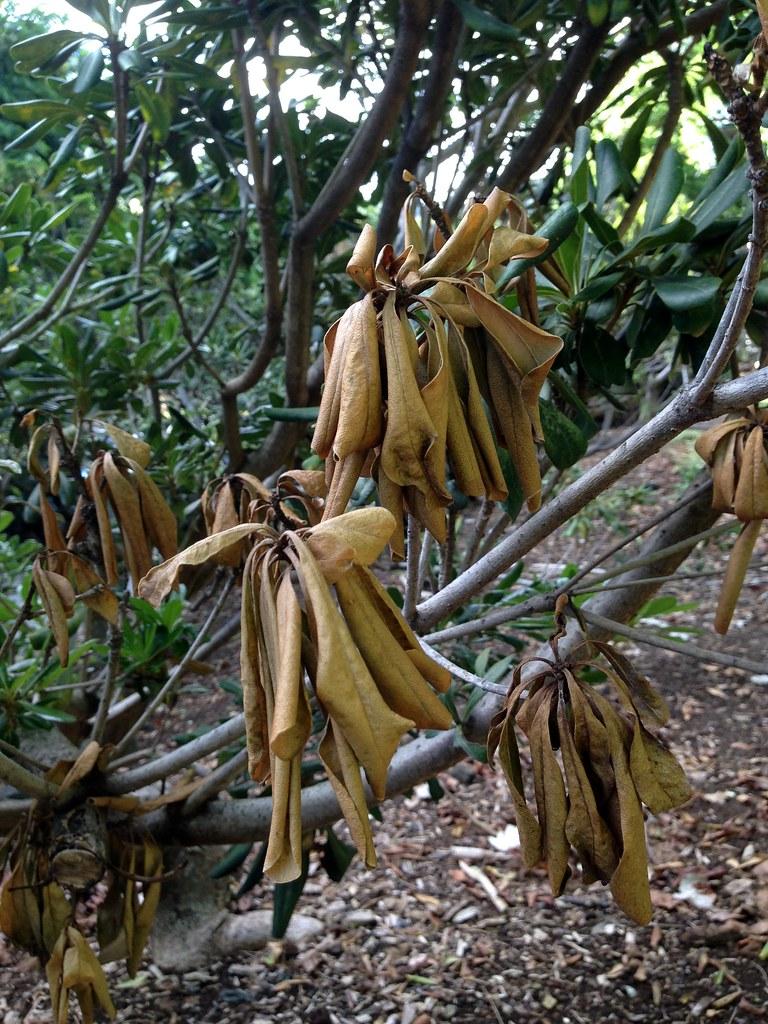
Dothiorella canker
Botryosphaeria spp.
What are Branch canker and dieback (Botryosphaeria spp.)?
Branch canker and dieback Formerly known as Dothiorella Canker, caused by the fungi Botryosphaeria spp. and Phomopsis, is a plant disease that affects woody hosts like avocado trees. It forms cankers on limbs and trunks, leading to symptoms such as reddish sap exudation, cracked and discolored bark, and cankers that penetrate the xylem. Additionally, it can cause shoot blight, leaf scorch, and stem end rot on fruit.
How do Branch canker and dieback (Botryosphaeria spp.) occur?
Branch canker and dieback are reproduced through spores produced by fungi. These spores enter plants through pruning wounds. Spread occurs through the air dispersal of spores and rain or irrigation splash. Pycnidia, spore-forming structures, on dead wood can also contribute to disease transmission. Pruning activities and environmental factors, such as heavy rainfall and stress, can increase dissemination and infection.
Symptoms
1 - Effects on Plant Health
• The fungus can cause significant damage to plants, leading to branch dieback, canker formation, and eventual death. • The disease can reduce plant vigor and productivity, resulting in decreased crop yields or stunted growth.
2 - Impact on the Environment
Fungal spores can contribute to air pollution and can lead to respiratory issues in humans and animals.
3 - Effects on Soil Health
• Leaves or branches that drop from infected plants can accumulate on the soil surface, affecting soil structure and nutrient cycling. • The fungus may produce toxins that can influence soil microorganisms and nutrient availability.
Solutions
1 - Cultural Control Measures
• Implement sanitation measures, disinfect material, and treat graft unions. • Proper irrigation techniques, planting high-quality material, and maintaining good tree nutrition can prevent plant stress and infection. • Excessive pruning should be avoided and done only during dry weather using clean tools.
2 - Physical Control and Management
• Infected plant material should be removed and destroyed, and pruning wounds should be avoided or minimized. • Address and correct environmental and nutritional stresses in the trees. Ensure proper irrigation practices, including periodic soil leaching and using low salinity water if necessary.
3 - 3. Chemical Control Measures
• Fungicides commonly used include Difenoconazole, Myclobutanil, Thiophanate-methyl, Tebuconazole, and Propiconazole, but their use should be determined by a professional. • Fungicides with different modes of action should be rotated to prevent resistance. • Fungicides should only be used as a supplement to cultural and physical control measures.
